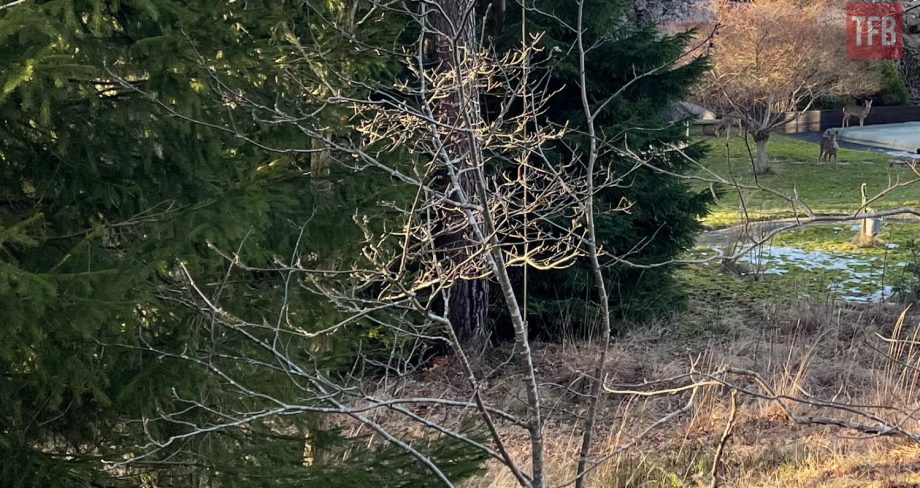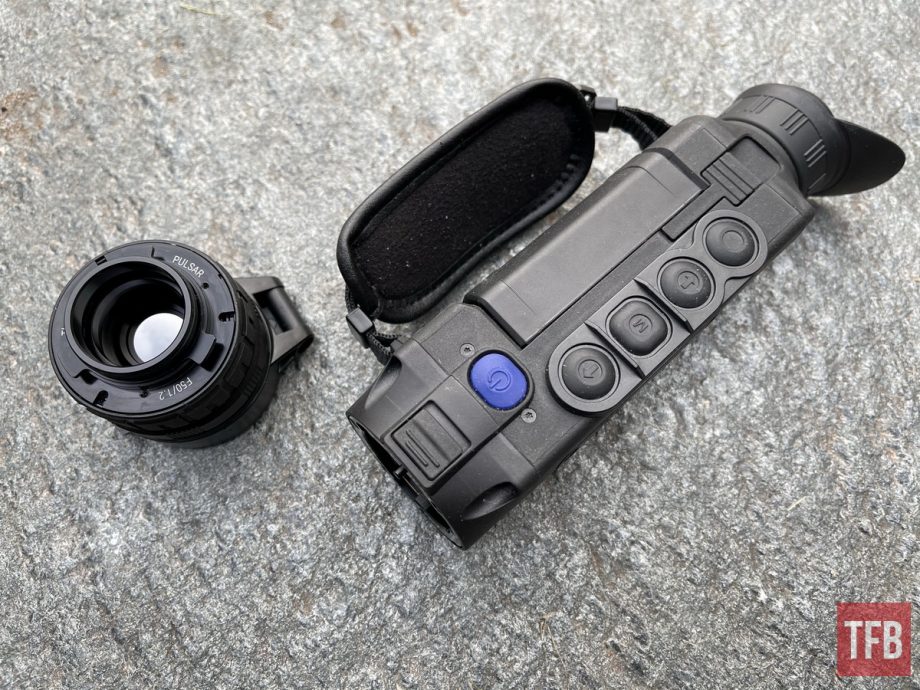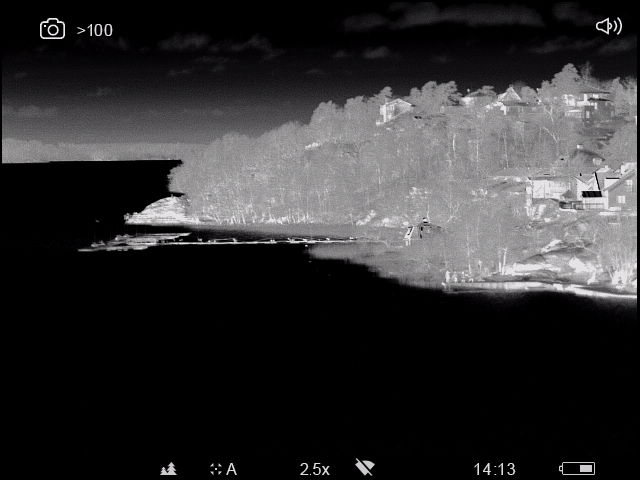TFB Review: Pulsar Helion 2 XP50 Thermal Monocular
(The review was kindly provided by TFB – The Firearm Blog)
THE PULSAR HELION 2 XP50 IS PULSAR’S HIGH-END THERMAL MONOCULAR.
Over time we have reviewed most of Pulsar’s monoculars, from the entry-level Axion XM30S to the mid-level XQ38 and XQ38 LRFs. If you’re interested in high-quality thermal imaging and your budget isn’t strained, this is definitely one of the devices that should be on your list to consider.
These types of monoculars can be used both day and night, and they are very effective. Basically, there’s no hiding for anyone. The Helion 2 can detect a human figure (1.8×0.5 m) as far out as 1800 meters. Note that they cannot be used as a sight, they are made to be used hand-held or mounted on a tripod for observation and spotting.

First Impression & Description
First of all, the Helion 2 XP50 was much smaller than it appeared in pictures – much slimmer at least. It’s still the largest of Pulsar’s monoculars, but I carried it in the outside pocket of my jacket without problems. The dimensions are 235x55x58 mm and the weight is 500 grams, but it does feel lighter than that as well. The buttons are tactile and covered with what I suppose is rubber. The on-off button is blue.
The heart of any thermal device is its sensor. The Helion 2 XP50 comes with a 640×480 pixel micro-bolometric sensor, with a 17 μm pixel pitch, 50 Hz frame rate. The NETD (Noise-Equivalent Temperature Difference) is <40 mK, the lower the better. NETD is typically being expressed in millikelvins (mK). The value is measured in a laboratory under ideal conditions.
The sensor is protected by a hard plastic lens cover, on a hinge. Very good design, as I’m expert level 100 in misplacing lens covers. It won’t happen here.
Below: Mr. Roebuck through Helion 2 XP50. Winter, +2C, windy. The distance is 30-40 meters. Picture in Picture works great. He was bothered by my existence and finally left. Note the branches that create a sense of depth, and this feeling is much greater in reality.

The magnification is from 2.5 up to 20 (x8 zoom). My recommendation when it comes to thermals is to look for units with the lowest magnification, that’s what I use most. High magnification doesn’t automatically create any sort of quality image. Unfortunately, that comes at a cost, like the Helion here and the Pulsar Accolade 2 LRF XP50 Thermal Bi(n)oculars.
Describing these types of devices is always tricky. Some users want to know all the technical details down to the last figure. Some readers couldn’t care less about these numbers and want to know if it’s easy to use and if the image quality is really good? I can assure you that the image quality, in fact, is really impressive. It’s one of the best I’ve ever seen. In most conditions, you get a really high definition of the surroundings and the target (I’m assuming we’re observing or hunting and you’re looking to find and identify animals).
Below: The Three Billy Goats Gruff? Nope, roe deer. There are details to be seen here if you know.

There are eight color palettes for observation, with an Image Detail Boost function. There are also four operating presets depending on where you are: forest, rocks, identification and “user” where you can optimize the image yourself. The interface is user-friendly, although I sometimes still make some silly mistakes and use the wrong buttons. Should I blame the device or myself?
The firmware is upgradeable, so if Pulsar comes with enhanced functions you’ll be able to upgrade in the future. Some of these upgrades have been quite substantial historically. You can also connect to Pulsar’s App via Wi-Fi or use the USB-connection to download the media you recorded.
Below: This is an example where black hot does better as it shows the surroundings. There is a reason you have a choice of colors. If either was that much better in all conditions there would be no reason to have a palette. Note the “hot spot” on the ground, where she had been resting for a while.

In your Helion 2 XP50 package, you’ll get an IPS7 battery pack with a battery charger, USB cable, quick start guide and a warranty card. There’s also a hand strap which is very comfortable. The carrying case is quite handy and comfortable and will protect your unit.
This is what you see. If you’re lucky. She knows you’re there, you not so much unless you go thermal. The sun has just set. It’s winter, it’s getting dark hence the lack of color. The picture was taken by iPhone, from about 25 meters.

This is what the Helion 2 sees at 2.5x. You can’t miss her.

At 5x, forest mode. Note that while the conditions aren’t terrible, they aren’t good for a thermal.

The beauty. It took a few hours to “blend in”, stalk her and get this close. The TFB staff works hard to get the best quality for these reviews.

The Helion 2 XP50 takes the guessing away: three. Mr. Roe buck left the ladies. Compare the pump and the bucket made out of metal as well. 2.5x power.

And red hot, from a video. You may only like “white hot” but the color palettes can help to ease the “burning out” on the eyes in really dark conditions. Note that taking pictures from videos like this reduces the quality.

Some fallow deer at about 130-150 meters. Dawn, 30 minutes before the sun goes up. Snow and ice on the ground, very windy. Check the difference between white and black hot, and the big horns on the buck. I’m glad I didn’t have a collision with them as they crossed the road.
The standard objective lens is F50/1.2, but on the Helion 2, it’s interchangeable. It provides magnification from 2.5 – 20x with detection up to 1800 m. It has a quick bayonet mounting and it’s waterproof.
If you want, you can swap it out with a 38 mm or even a 28 mm lens for a wider field of view, but you will be sacrificing the detection distance and magnification.
As an example: the F28/1.2 lens provides magnification between 1.4 – 11.2x and detection distance up to 1000 m. It’s waterproof like the rest.

Here’s what it looks like with the lens taken off.

Where is it made? It is made in Europe, in Lithuania.
All of the thermal images and videos in this article are recorded with the built-in photo and video recorder, which is extremely easy to use. Play record and aim. There’s 16 GB of internal memory for you, which means a huge amount of hours of recorded video that can be downloaded via Wi-Fi or cable and shared.
Below: You’re not likely to spot this roe deer without a thermal. She’s about 40 meters away.

CONCLUSION
What I like best about the Helion 2 XP50 is the image quality, the wide Field of View (2.5x), the Picture-In-Picture function and the possibility to take pictures and record. It’s large but fits a pocket.
I had the Helion 2 XP50 for about two months and it worked great, it will now be returned to Pulsar and I’ll miss it. It’s easy to get used to high quality. Friends have borrowed it for various hunting exercises and their feedback has been built into this review. It’s been winter with a combination of rain, overcast, fog, snow and very little direct sunshine at all, hard conditions for any thermal. The thermal sensor “hates” water and humidity in the air, still, it performed like the XM30S and XQ38s never would have managed. There were no issues with anything really. Just charge the battery and go out and use it. The unit never “froze” or needed a restart.
All images are of wild animals, no fences!
Below: Although these heat sources are about 7-800 meters away, it’s possible to detect heat beyond 2000 meters. There are some people and a dog at about 600 meters, around the bottom right. In a still picture, it may not be obvious, but when they move you spot them immediately.


